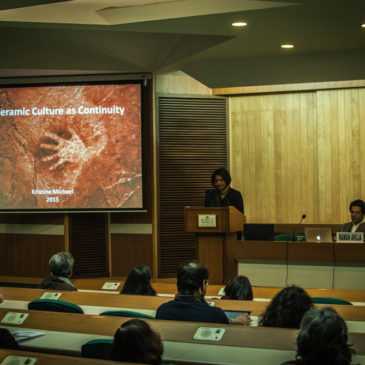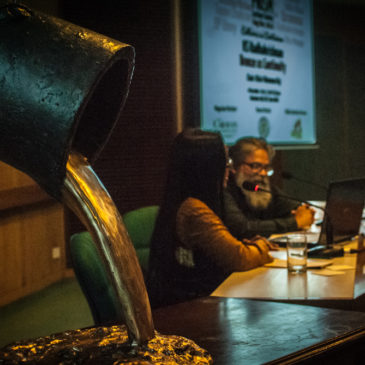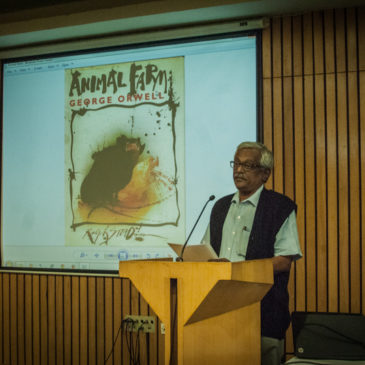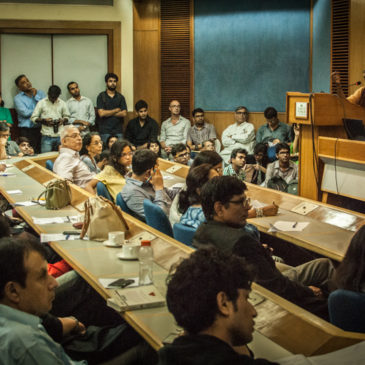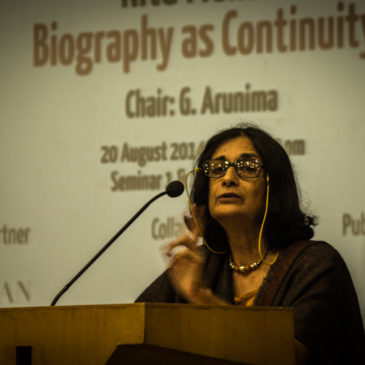Kristine Michael: Ceramic Culture as Continuity
What I have to say can be honest only in clay.” Resonances were palpable on this last evening of the PRISM Lecture Series 2014, initiated in last August with another practice of touch: puppetry, with Eddin Khoo. Acclaimed and prolific ceramic artist Kristine Michael opened the doors of her own tradition of continuity. Continuity, and immediacy. “With clay, one has to start again each time. Even the fire we use is a unique event. Each time both predictable and unpredictable.” And from immediacy, back to time, and history: “Ceramic is also connecting us to the past. It allows you to touch pieces made 5000 years ago!” added Kristine.
Through the designs of ceramic, the environment and cultures of humanity come together . The works of Kristine testify to this matrix of inspirations.


